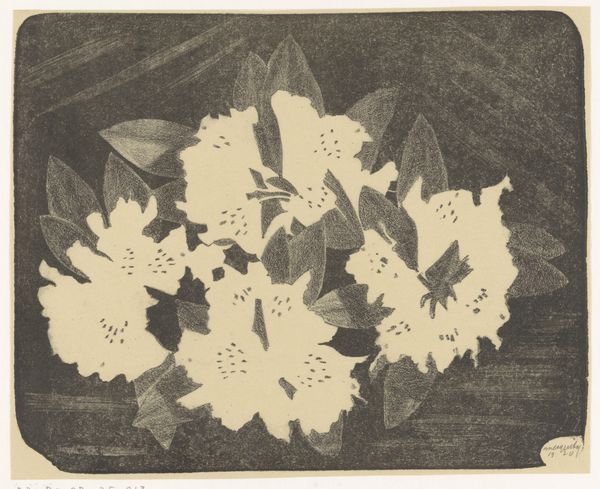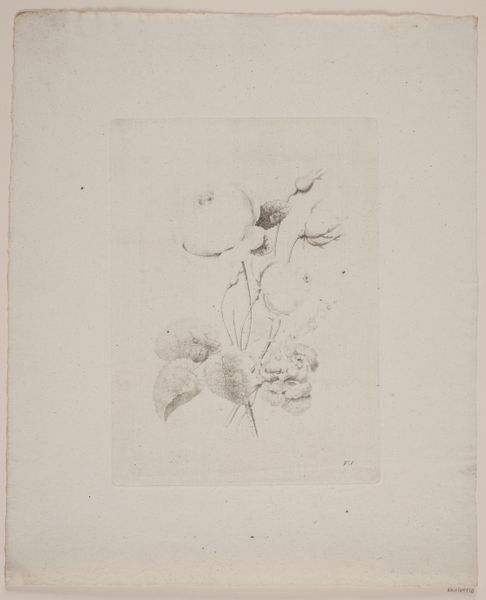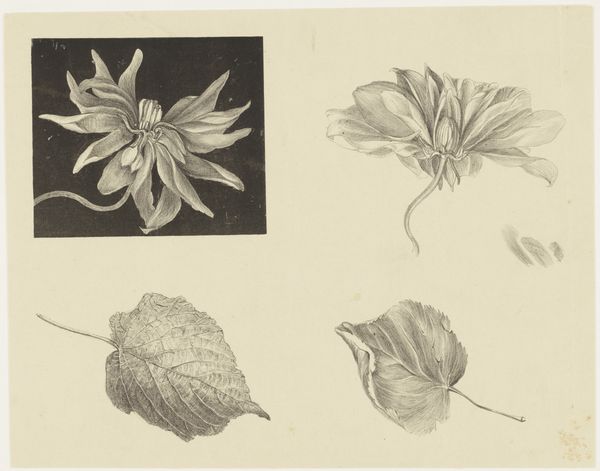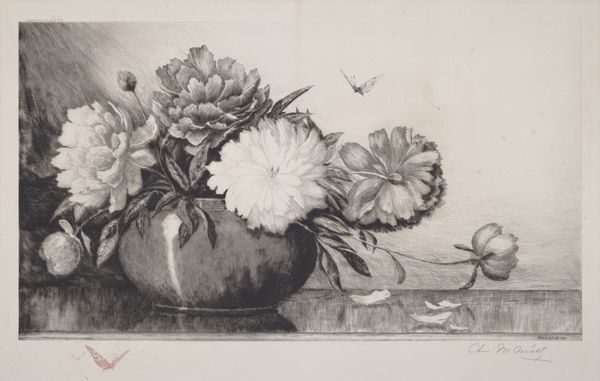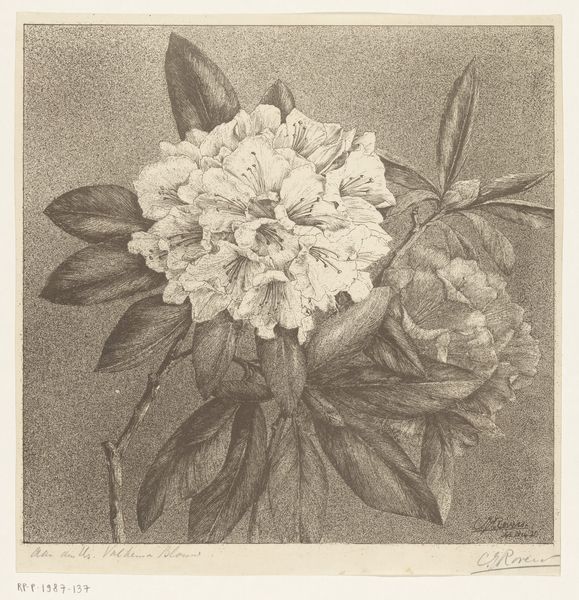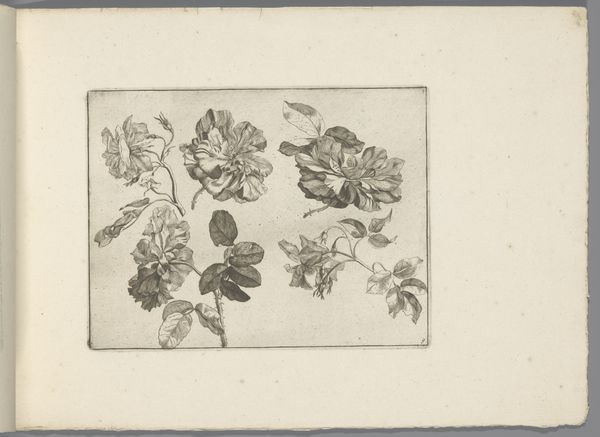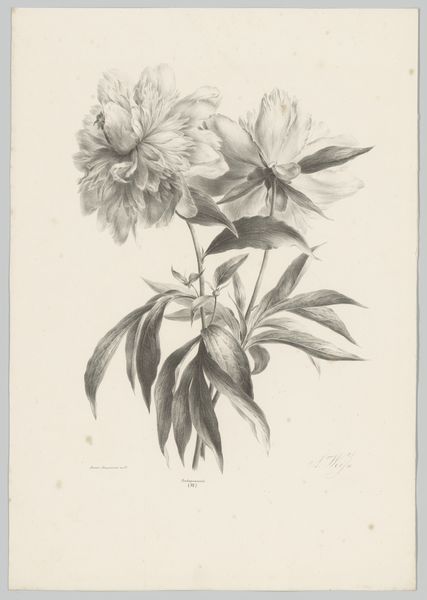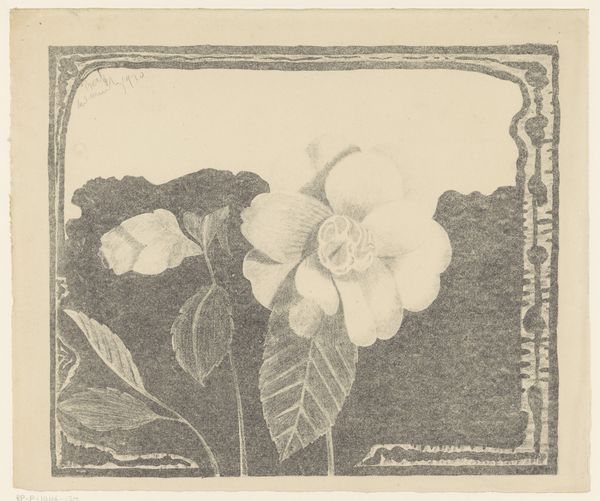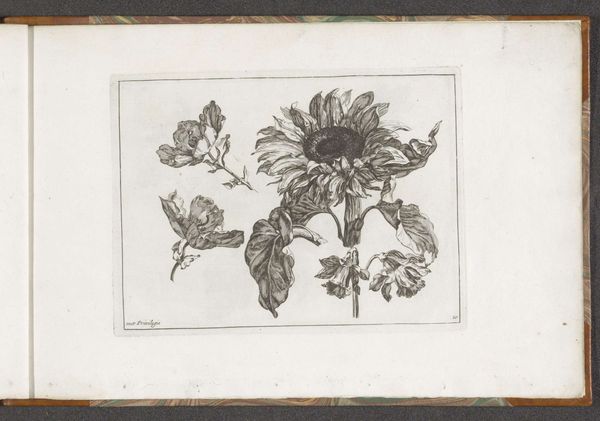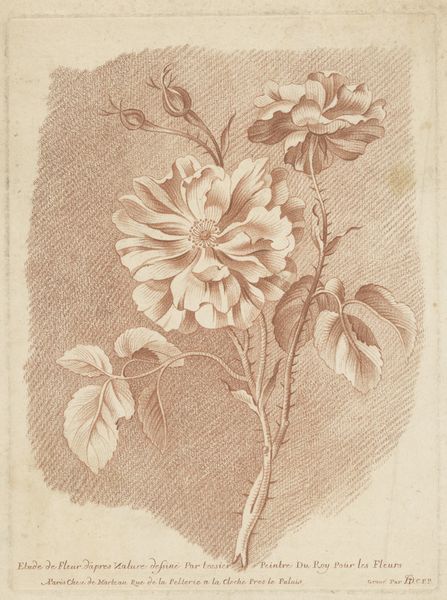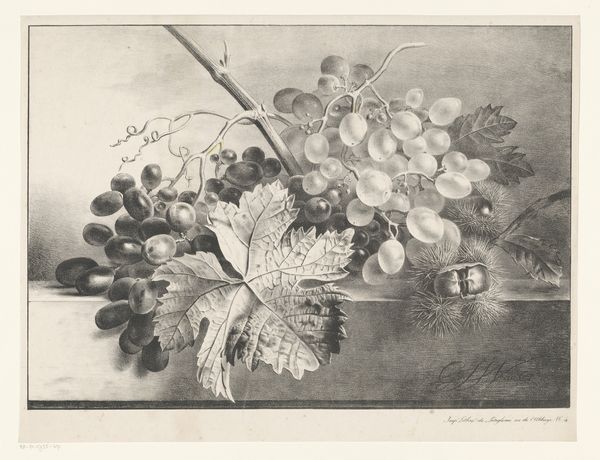
print, etching
# print
#
impressionism
#
etching
#
landscape
#
figuration
#
line
Dimensions: image: 127 x 176 mm sheet: 261 x 315 mm
Copyright: National Gallery of Art: CC0 1.0
Editor: This is J. Henry Hill's "Waterlilies," an etching from around 1870. I’m really drawn to how delicate the lines are, but it still manages to capture such depth and shadow. What do you see when you look at it? Curator: The formal elements are indeed quite striking. The artist’s use of line is paramount. Consider the interplay of hatching and cross-hatching. Notice how Hill varies the density and direction of these lines to create not just tonal variation, but also to articulate form. Observe, for instance, the meticulous rendering of the lily pads and the blossoms themselves. Editor: So, you're saying the texture comes entirely from the way he layered the lines? It’s almost like he's sculpting with ink. Curator: Precisely. He creates a convincing illusion of three-dimensionality, as you say, sculpting purely through graphic means. Note, too, how the artist manipulates light. The lilies emerge from a darker, densely worked background, creating contrast. It invites us to consider not just the ‘what’ but the ‘how’ of representation. Editor: I see it now. It’s not just a picture of water lilies; it's about the act of drawing itself. It makes you appreciate the skill and technique. I was so focused on the image, I didn't fully register that the magic is in how it was crafted! Curator: An excellent observation. Reflect on the labor embedded in each line. Formalism compels us to move beyond mere depiction and contemplate the structural language of art itself. Editor: I hadn't thought about art this way, examining only the line or form as if there's nothing else. It really opens up a different way to interpret art. Curator: Indeed, understanding the fundamentals provides an invaluable approach for looking at art with more discerning eyes.
Comments
No comments
Be the first to comment and join the conversation on the ultimate creative platform.


